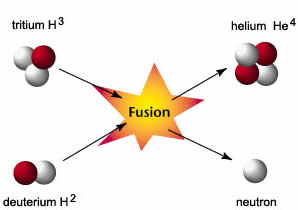

The two most advanced approaches for it are magnetic confinement (toroid designs) and inertial confinement (laser designs). Prior to this breakthrough, controlled fusion reactions had been unable to produce break-even (self-sustaining) controlled fusion. On 13 December 2022, the United States Department of Energy announced that on 5 December 2022, they had successfully accomplished break-even fusion, "delivering 2.05 megajoules (MJ) of energy to the target, resulting in 3.15 MJ of fusion energy output." The US National Ignition Facility, which uses laser-driven inertial confinement fusion, was designed with a goal of break-even fusion the first large-scale laser target experiments were performed in June 2009 and ignition experiments began in early 2011. Research into developing controlled fusion inside fusion reactors has been ongoing since the 1930s, but the technology is still in its developmental phase. While fusion was achieved in the operation of the hydrogen bomb (H-bomb), the reaction must be controlled and sustained in order for it to be a useful energy source. Self-sustaining nuclear fusion was first carried out on 1 November 1952, in the Ivy Mike hydrogen (thermonuclear) bomb test. Research into fusion for military purposes began in the early 1940s as part of the Manhattan Project. In the remainder of that decade, the theory of the main cycle of nuclear fusion in stars was worked out by Hans Bethe. Building on the early experiments in artificial nuclear transmutation by Patrick Blackett, laboratory fusion of hydrogen isotopes was accomplished by Mark Oliphant in 1932. Quantum tunneling was discovered by Friedrich Hund in 1927, and shortly afterwards Robert Atkinson and Fritz Houtermans used the measured masses of light elements to demonstrate that large amounts of energy could be released by fusing small nuclei. In 1921, Arthur Eddington suggested hydrogen–helium fusion could be the primary source of stellar energy. The extreme astrophysical event of a supernova can produce enough energy to fuse nuclei into elements heavier than iron. Nuclear fusion uses lighter elements, such as hydrogen and helium, which are in general more fusible while the heavier elements, such as uranium, thorium and plutonium, are more fissionable. The opposite is true for the reverse process, called nuclear fission. Fusion of nuclei lighter than these releases energy (an exothermic process), while the fusion of heavier nuclei results in energy retained by the product nucleons, and the resulting reaction is endothermic.

These elements have a relatively small mass and a relatively large binding energy per nucleon.

Nuclear fusion is the process that powers active or main-sequence stars and other high-magnitude stars, where large amounts of energy are released.Ī nuclear fusion process that produces atomic nuclei lighter than iron-56 or nickel-62 will generally release energy. This difference in mass arises due to the difference in nuclear binding energy between the atomic nuclei before and after the reaction. The difference in mass between the reactants and products is manifested as either the release or absorption of energy. Nuclear fusion is a reaction in which two or more atomic nuclei, usually deuterium and tritium (hydrogen variants), are combined to form one or more different atomic nuclei and subatomic particles ( neutrons or protons).


 0 kommentar(er)
0 kommentar(er)
